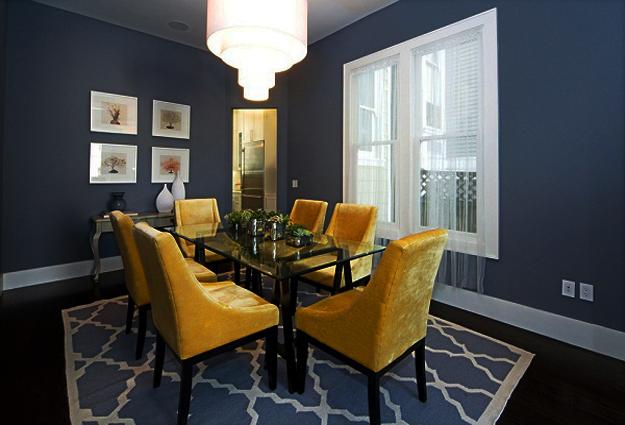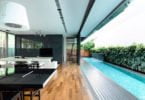All lot of the time, people are hesitant to try combination of brightness and contrast, especially when they are new to the world of interior design. They worry that in doing so, they will take their meticulously planned space from a pulled-together, polished room to a sloppy mess. If that scenario sounds familiar, don’t worry. You are far from alone. But, luckily, there are many ways to create combination of brightness and contrast while still ensuring a cohesive design once you’re done with all the finishing touches.
Color Combination Of Brightness And Contrast in Home Decor
I am outlined everything you need to know. Follow these guidelines while you work on mixing materials and we promise that you’ll be able to navigate the design process with confidence.
Why Contrast Matters?
Imagine if you walked into a room and every surface was covered in the exact same type of material in the exact same shade. After getting over the initial shock factor, you would likely find the room extremely boring.
In this admittedly unlikely scenario, there’s nothing to keep you interested in the space, so it’s only natural for your eyes and mind to wander somewhere more engaging.
Contrast, which is what’s achieved by combination of brightness and contrast will provide visual interest. We tend to gravitate towards spaces that give our eyes multiple elements to examine within a cohesive whole, so keep this goal in mind when shopping for the items that will eventually fill your interiors.
That said, when it comes to combination of brightness and contrast, there is such a thing as too much. After a certain point, too many points of visual interest becomes overwhelming and our eyes need somewhere to rest and reset themselves. Spaces that are well designed strike a balance between these two extremes to create a harmonious combination of brightness and contrast look.
Play With Patterns:
When it comes to try combination of brightness and contrast, patterns are often the first things that come to mind. After all, you can use them to infuse both color and visual interest into the space for a relatively negligible cost when compared to similar items in neutral tones.
Plus, you can apply them essentially anywhere in the room from wall coverings, to a statement piece of furniture, and accessories like throw pillows. The key to mixing patterns successfully is combining different prints that still have a few common threads to tie them together.
Consider keeping your prints within the same color palette. Or, if you feel like trying for a more advanced color scheme like a tetradic scheme, keep the patterns within the same theme to give the room a cohesive look.
Restraint is also key. Most interior designers recommend incorporating a maximum of four patterns into one defined space. Make sure to break up the patterns by using plenty of neutrals in between.
Do your best to visually and physically space the patterns out around the room, so that no one section ends up looking too overstimulating.
Add In Texture:
As I said before, in the world of interior design, texture refers to the way a material feels. But, it’s also important to consider how a material looks like it feels. Combination of brightness and contrast, those feelings is essential when adding interest to your space.
Texture is key when it comes to adding visual weight to the room and keeping the space grounded. Remember that rough textures often read as weightier and more comfortable to our eyes than smooth ones.
So, if you’re looking for a welcoming oasis, rough textures are the way to go, whereas smooth textures generate a sleek look. As for where to put texture in your interiors, it can come from a variety of sources.
Play up architectural elements like crown molding. Don’t shy away from putting it on your walls through a wallpaper or a covering or incorporate some textiles.
Take Styles Into Consideration:
At Kadvacorp, I often talk about finding personal style or identifying the type of interiors that you find most visually appealing and would like to try and emulate in your own space.
I’ll ask you to think about questions like, “Do you prefer the sleek look of modern rooms or the comfort provided by cozy country aesthetics?”
While those questions are a great place to start, especially if you’re just starting to identify looks that you love, they don’t exactly tell the whole story.
In reality, interior design is rarely that cut and dry when it comes to subscribing to a singular school of thought. Truly next-level rooms often combine elements of one or two style types together with combination of brightness and contrast.
Especially when you’re new to interior design, it can be tempting to stick to a singular style or color palette that you know will go together well.
However, if you love a more eclectic look, there is no reason not to combination of brightness and contrast. We’ve brought you a few simple guidelines that will help you ensure that your individual design elements come together to form a unified space.
Keep them in mind and we promise that you’ll achieve a look that you love. Do you like to mix when it comes to your interiors? If so, do you have any tips to share? Let us know in the comments below.








Leave a Comment
You must be logged in to post a comment.